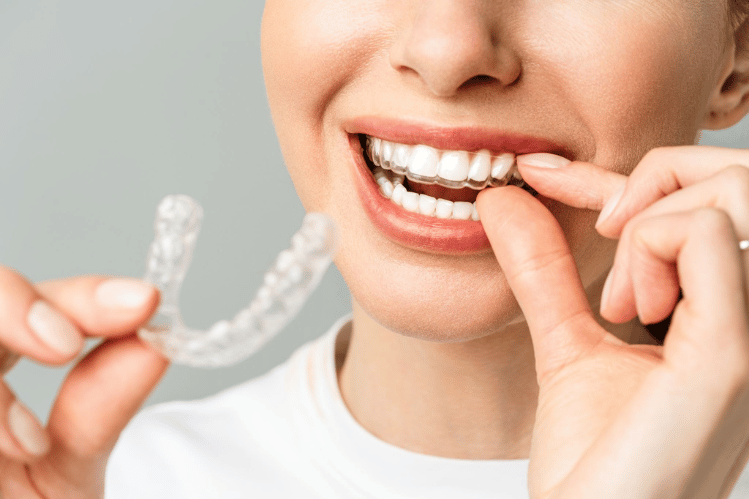The Ultimate Guide To Legacy Orthodontics
The Ultimate Guide To Legacy Orthodontics
Blog Article
The Best Strategy To Use For Legacy Orthodontics
Table of ContentsTop Guidelines Of Legacy OrthodonticsLegacy Orthodontics - TruthsLegacy Orthodontics Fundamentals ExplainedThe 4-Minute Rule for Legacy OrthodonticsThe Only Guide to Legacy Orthodontics
At Advanced Orthodontics, we give individuals with a holistic treatment experience. Furthermore, we provide adjustable therapy timetables, adaptable settlement alternatives and a fun, delightful experience. orthodontics. Call ( 480) 357-4900 today for more details and routine a consultation.An orthodontist is a dental expert trained to detect, prevent, and treat teeth and jaw irregularities. They correct existing problems and are trained to identify problems that may create in the future. Orthodontists function with individuals of any ages, from kids to adults. Individuals usually link a best smile with excellent health and wellness.
Malocclusion, or misaligned teeth, can cause oral concerns, consisting of dental caries, gum condition, and tough or uncomfortable chewing. But not everybody is birthed with straight teeth. If you have a negative bite or huge areas in between your teeth, you might intend to seek advice from a dental professional concentrating on orthodontic treatment.
Examine This Report on Legacy Orthodontics
( Photo Credit Score: DigitalVision/Getty Images) Orthodontists use taken care of and removable dental gadgets, like braces, retainers, and bands, to alter the setting of teeth in your mouth. Orthodontic treatment is for dental irregularities, including: Misaligned teethBite troubles, like an overbite or an underbiteCrowded teeth or teeth that are also much apartJaw misalignmentThe objective of orthodontic therapy is to improve your bite.
A healthy and balanced bite guarantees you can consume, chew, and speak correctly. While you may think of orthodontists as mostly for children or young adults who require dental braces, they can deal with oral problems at any age. Orthodontists attend college, dental institution, and orthodontic school. After graduation, they spend 2 or 3 years in an orthodontic residency program.
All orthodontists are dental experts, yet not all dentists are orthodontists. Orthodontic residency programs use intensive, focused direction for dental specialists. They concentrate on two areas: How to appropriately and securely relocate teeth Just how to properly guide advancement in the teeth, jaw, and faceOnce an orthodontist has completed training, they have the alternative to become board certified.
The Legacy Orthodontics Ideas
Imbalance, or malocclusion, is one of the most usual reason people see an orthodontist. It is hereditary and is the outcome of dimension distinctions in between the top and lower jaw or in between the jaw and teeth. Malocclusion causes tooth congestion, a misshapen jaw, or uneven bite patterns. Malocclusion is normally treated with: Your orthodontist connects metal, ceramic, or plastic square bonds to your teeth.
If you have just minor malocclusion, you might have the ability to utilize clear braces, called aligners, as opposed to traditional dental braces (http://tupalo.com/en/users/8018300). Some people require a headgear to aid relocate teeth into line with pressure from outside the mouth. After braces or aligners, you'll require to wear a retainer. A retainer is a custom-made tool that keeps your teeth in position.
They're frequently used on children. They can develop additional room in the mouth without having to draw teeth. If you have a significant underbite or overbite, you could need orthognathic surgical treatment (likewise called orthodontic surgical treatment) to lengthen or shorten your jaw. Orthodontists make use of wires, medical screws, or plates to support your jaw bone.
You might need to see an orthodontist if you have: Crowding or not enough space for every one of your teethOverbite, when your top teeth come your bottom teethUnderbite, when your base teeth are also far forwardSpacing or problems with gapsCrossbite, which is when your top teeth fit behind your base teeth when your mouth is closedOpen bite or an upright space between your front base and upper teethMisplaced midline, when the center of your bottom and top teeth do not line up Remedying an oral malocclusion can: Make biting, chewing, and talking easierImprove the proportion of our face and your general appearanceEase discomfort from temporomandibular joint conditionsSeparate your teeth and make them easier to cleanse, helping stop dental caries or dental caries It's frequently a dental practitioner that first notifications misaligned teeth during a regular test.
The Main Principles Of Legacy Orthodontics

Throughout your very first orthodontic assessment, you'll likely have: An oral examPhotos taken of your face and smileDental X-raysPanoramic (360 degree) X-rays of your face and headImpressions to develop molds of your teethThese examinations will help your orthodontist know exactly how to continue with your treatment. leesburg orthodontist. An orthodontist is a dental professional who's had training to treat your teeth and jaw
Orthodontists may carry out surgery, exams,X-rays,and even more to aid you obtain a much more comfortable, healthier smile. An orthodontist is concentrated on your bite, so something like a chipped tooth would be managed by a dental expert. Orthodontists are dentists but not all dentists are orthodontists. Orthodontists are concentrated on your bite, or the way your teeth meshed, and the straightness of your teeth.
Ever asked yourself just how stars always appear to have perfectly straightened teeth? Orthodontists are dental professionals who focus on correcting irregularities in the teeth and jaws.
The Only Guide to Legacy Orthodontics

While dental braces are the most commonly recognized orthodontic therapy, orthodontists have a varied toolkit at their disposal. The specific method selected depends upon the severity of the instance, the patient's age, and private preferences. These tried-and-true braces utilize a system of braces bound to the teeth and attached by cords.
Clear great site aligners, like Invisalign, are a preferred choice for clients looking for an extra discreet treatment option. These detachable trays are personalized to progressively move the teeth's setting. Headgear may be utilized along with braces or aligners to apply extra targeted pressures, especially for dealing with jaw discrepancies. In cases of narrow jaws, palatal expanders can be used to develop space for proper tooth alignment.
Report this page